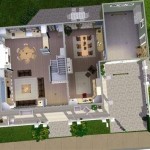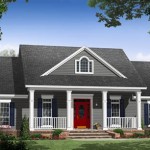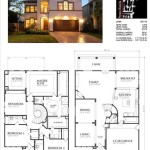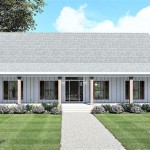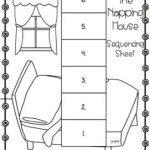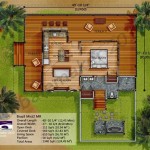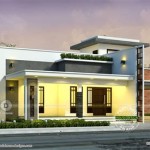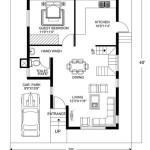Exploring Small Spanish Home Floor Plans
Small Spanish home floor plans offer a unique blend of functionality and cultural aesthetic, making them a popular choice for those seeking a charming and efficient living space. These plans often integrate traditional Spanish architectural elements, adapted for smaller footprints, creating homes that are both visually appealing and practical for modern living. Careful consideration of space utilization, material selection, and layout design is crucial in maximizing the potential of a small Spanish-style home.
Spanish architecture is characterized by its simplicity, use of natural materials, and integration with the surrounding landscape. Think stucco walls, red-tiled roofs, arched entryways, and courtyards. In a small home, these elements need to be scaled down and strategically placed to create the desired effect without overwhelming the limited space. The goal is to retain the essence of the Spanish style while ensuring the home remains comfortable and functional.
Space optimization is paramount in small Spanish home design. Every square foot needs to be carefully considered, and multi-functional spaces are highly desirable. Open floor plans, strategic storage solutions, and thoughtful furniture selection are essential for creating a living environment that feels spacious and uncluttered. The following sections will delve into key aspects of designing and implementing small Spanish home floor plans, highlighting specific strategies and design considerations.
Maximizing Space Through Open Floor Plans and Multi-Functional Areas
One of the most effective strategies for maximizing space in a small Spanish home is employing an open floor plan. This typically involves combining the living room, dining area, and kitchen into a single, unified space. This approach eliminates unnecessary walls, promoting a sense of spaciousness and allowing natural light to flow freely throughout the home. The absence of barriers also facilitates social interaction and creates a more inviting atmosphere.
While an open floor plan is beneficial, it's important to define distinct zones within the space. This can be achieved through the use of varying flooring materials, changes in ceiling height, or strategic placement of furniture. For example, a rug can delineate the living room area, while a kitchen island can serve as a visual boundary between the kitchen and dining area. These subtle cues help to create a sense of order and organization within the open space.
Multi-functional areas are another crucial component of small home design. A guest bedroom can double as a home office, a dining table can be used as a workspace, and a living room can transform into a media room. The key is to select furniture that is easily adaptable and can serve multiple purposes. For example, a sofa bed can provide comfortable seating during the day and a sleeping space for guests at night. Storage ottomans can offer both seating and storage space. By maximizing the functionality of each room, it's possible to create a comfortable and efficient living environment without sacrificing style or comfort.
Another area to consider is outdoor space. Even a small patio or courtyard can significantly expand the living area, especially in warmer climates. These outdoor spaces can be used for dining, relaxing, or entertaining, effectively extending the usable square footage of the home. Incorporating elements such as outdoor fireplaces, comfortable seating, and lush landscaping can create an inviting and functional outdoor living space.
Integrating Traditional Spanish Architectural Elements
The hallmark of Spanish architecture lies in its distinctive aesthetic elements. In a small home, it's crucial to select and adapt these elements carefully to create an authentic Spanish feel without overwhelming the limited space. Stucco walls, red-tiled roofs, archways, and courtyards are all iconic features of the Spanish style, and each can be incorporated into a small home design in creative and impactful ways.
Stucco walls are a defining characteristic of Spanish architecture. Their textured surface adds depth and character to the exterior and interior of the home. In a small home, it's important to choose the right stucco texture and color to create the desired effect. A lighter-colored stucco can help to brighten the interior and make the space feel larger, while a coarser texture can add visual interest. Consideration should be given to the maintenance requirements of stucco, especially in climates with extreme weather conditions.
Red-tiled roofs are another iconic element of Spanish architecture. While a full-sized red-tiled roof may be too heavy or expensive for a small home, it's possible to incorporate the look and feel of this feature in other ways. For example, using red tile accents on porch roofs or entryway canopies can evoke the Spanish style without requiring a full roof replacement. Alternatively, using terracotta-colored roofing materials can achieve a similar effect at a lower cost.
Archways are a classic element of Spanish design that can add elegance and visual interest to a small home. Arched doorways, windows, and passageways can soften the lines of the space and create a more inviting atmosphere. Consider using arches strategically to frame views, define spaces, or create a focal point in the home. Properly executed arches can dramatically enhance the Spanish aesthetic of a small home.
Courtyards are traditionally central to Spanish homes, providing a private outdoor space for relaxation and entertaining. In a small home, a courtyard may be scaled down to a small patio or enclosed garden, but it can still serve as a valuable extension of the living space. Incorporating elements such as fountains, planters, and comfortable seating can create a tranquil and inviting courtyard that enhances the overall living experience. Think small, contained water features that create a soothing sound without taking up too much room.
Strategic Use of Natural Light and Color Palettes
Natural light plays a crucial role in creating a bright, airy, and inviting living space, especially in small homes. Spanish architecture often emphasizes maximizing natural light through the use of large windows, skylights, and light-colored surfaces. A well-lit home feels more spacious and comfortable, and it can also help to reduce energy consumption. Careful planning and strategic placement of windows and skylights are essential for optimizing natural light in a small Spanish home.
Large windows are an effective way to bring natural light into the home. Consider incorporating windows that offer views of the surrounding landscape, as this can help to create a sense of connection with the outdoors. Casement windows and awning windows are particularly well-suited for Spanish-style homes, as they can be opened to allow for ventilation while also providing protection from the elements. Window treatments should be chosen carefully to allow for maximum light penetration while also providing privacy and insulation.
Skylights are another excellent way to bring natural light into a small home, especially in areas where windows are not feasible. Skylights can be installed in ceilings to illuminate rooms that lack natural light, such as hallways and bathrooms. They can also be used to create a dramatic effect in living rooms and kitchens. Choosing the right type of skylight is important to ensure proper ventilation and minimize heat gain. Consider using solar-powered skylights to further reduce energy consumption.
The color palette also plays a crucial role in enhancing the feeling of spaciousness and light in a small Spanish home. Light, neutral colors, such as white, cream, and beige, are ideal for walls, ceilings, and floors, as they reflect light and create a sense of openness. Accent colors can be used to add visual interest and personality to the space. Warm, earthy tones, such as terracotta, ochre, and olive green, are often used in Spanish-style homes to create a cozy and inviting atmosphere. Blue accents can evoke the Mediterranean sea, complementing the rustic charm of the design.
Mirrors can also be used strategically to enhance the feeling of space and light in a small home. Placing mirrors on walls can create the illusion of more space, while strategically positioned mirrors can reflect natural light and brighten up dark corners. Consider using large mirrors to make small rooms feel larger and more open. The placement of mirrors must be carefully considered so that they reflect desirable features of the room and avoid reflecting clutter or unsightly areas.
In conclusion, designing small Spanish home floor plans requires a thoughtful approach to space optimization, material selection, and architectural detailing. By prioritizing open floor plans, integrating traditional Spanish elements, and maximizing natural light, it's possible to create a charming and efficient living space that embodies the spirit of Spanish architecture.

Small Spanish Contemporary House Plan 61custom Modern Plans Style Homes

Bungalow House Plans Spanish Style Homes Craftsman

Small Spanish Contemporary House Plan 61custom Modern Plans Style Homes Mediterranean

1927 Radford Zamora Spanish Eclectic Style Small House Design Inspiration Vintage American Architure

Small Spanish Contemporary House Plan 61custom Modern Plans

Bungalow House Plans Colonial Mediterranean

Spanish Revival Style Home 1926 Universal Plan Service No 543 House Plans Portland Homes

Spanish House Plans Hacienda And Villa Style

1930 Practical Homes House Plans Bungalow Design Blueprints

Spanish House Plans Hacienda And Villa Style

